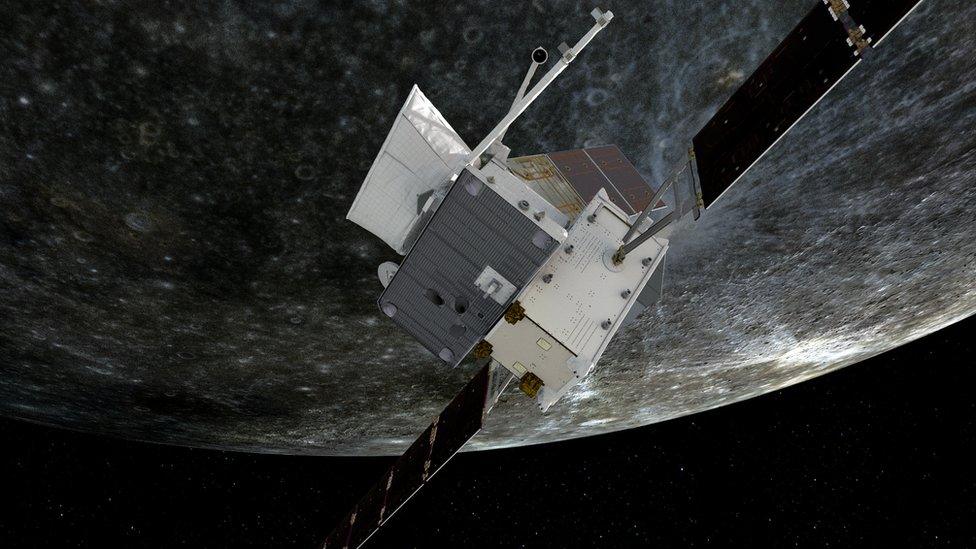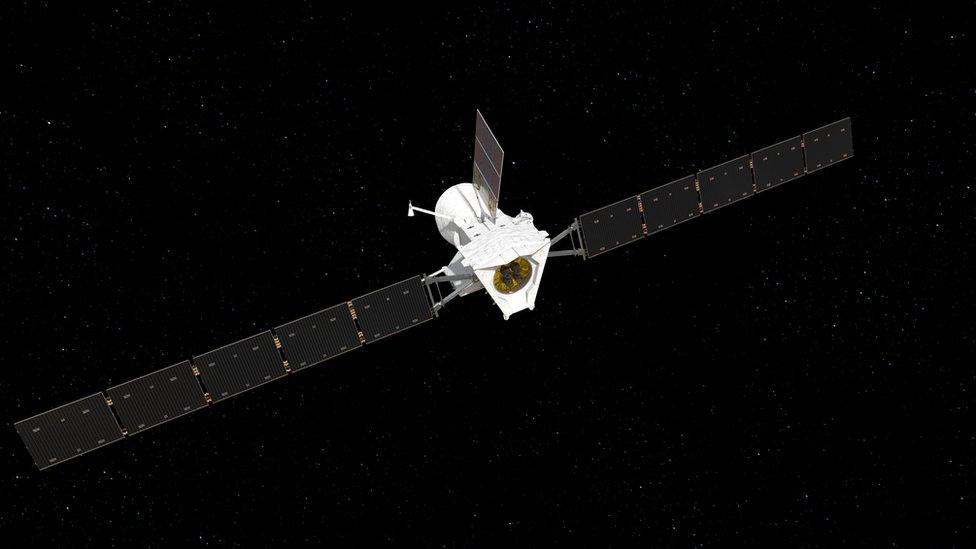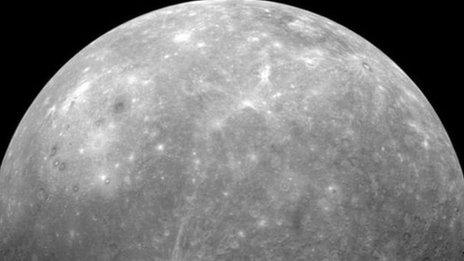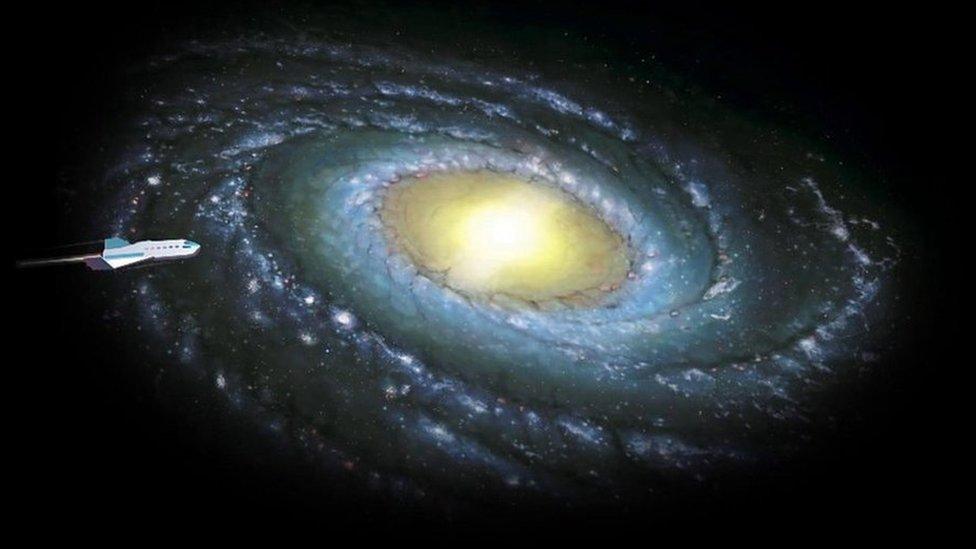The BepiColombo spacecraft is on its way to Mercury!
- Published
- comments

The spacecraft will fly past Mercury six times before entering orbit around the innermost planet of the solar system in 2025
Europe's first mission to Mercury, which is the smallest and least explored planet in our solar system, will arrive at its destination later today, but it won't be a very long visit!
The BepiColombo probe is currently moving too fast to go into orbit, which is the path an object like a spacecraft or a satellite takes around a planet, moon or a star when it's in space. Instead, the probe will fly straight by the planet.
However, every time Bepi's passes Mercury it will be slowed down a little and eventually, after six years of passing the planet, Bepi will be slow enough to enter Mercury's orbit.
The spacecraft is expected to fly past our solar system's smallest planet, at 11.34pm GMT on Friday, or at 12.34am in the UK in the early hours of Saturday morning. The flight path will take it within just 200km of Mercury's surface.
Bepi will be capturing scientific data and will also be snapping pictures during its first mission, but not with its high-resolution science cameras. These can't actually see anything at the moment because they're tucked inside what is referred to as the spacecraft stack.
Instead, two of the probe's three monitoring cameras will be taking photos around five minutes after the time of the spacecraft's close approach to Mercury and up to four hours later.
Mercury is the smallest planet in our solar system and the closest planet to the Sun. It's only slightly larger than Earth's Moon!
What is the BepiColombo probe?
The BepiColombo spacecraft will study Mercury and the solar system
The BepiColombo probe, which was named after the famous Italian scientist Giuseppe 'Bepi' Colombo, is actually two spacecrafts in one!
One part, the Mercury Planetary Orbiter, has been developed by the European Space Agency (ESA and the other part, the Mercury Magnetospheric Orbiter, was created by the Japanese Space Agency (JAXA).
BepiColombo, which has already flown past Earth once and Venus twice, will make nine planetary flybys in total before finally entering Mercury's orbit.

The BepiColombo probe is actually two spacecrafts in one
The European and Japanese elements of the mission will separate once they're in orbit and they'll perform different roles.
Together, both parts of the probe will study the various aspects of Mercury from its core to what goes on on its surface, its magnetic field and exosphere, which is the outermost layer of its atmosphere, to help us better understand how the planet came about and how it's evolved over time.
"We're really looking forward to seeing the first results from measurements taken so close to Mercury's surface," said the ESA's BepiColombo project scientist Johannes Benkhoff .
- Published14 July 2011

- Published7 March 2018

- Published26 September 2021

